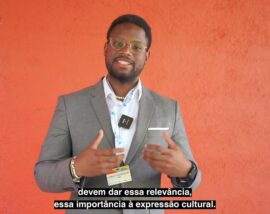Challenge El Salvador is the smallest country in Central America, and one of the most densely populated in the world. With a per capita gross domestic product of US$8,602 (in purchasing power parity terms) in 2015, and a population of 6.1 million, the country is largely urban (about 66 percent) and ranks in the 83rd percentile worldwide for population density. Since the end of the Salvadoran Civil War in 1992, the country has advanced on both social and political fronts. In health, El Salvador has already achieved the Millennium Development Goal for reducing child mortality. In addition, the poorest segments of the population have been increasingly making use of healthcare facilities, aided in part by a policy of free primary care services. Immunization rates have also increased from 86 percent in the 1990s to 91 percent in recent years (2010-13). Similarly, access to improved sanitation and water resources increased from 79 percent to 90 percent, and the share with access to improved sanitation expanded from only 56 percent to over 70 percent during the same period. In education, both access to education, particularly at the primary level, and literacy rates have increased, with the most significant advances in urban areas. Finally, El Salvador has forged ahead in consolidating democracy since the end of the Civil War, with six consecutive democratically-elected governments and peaceful transitions of power. Despite this progress, poverty remains high, in part due to the country’s anemic growth. Using international poverty and extreme poverty lines of US$4 per day and US$2.5 per day, respectively, 31.4 percent of the Salvadoran population is considered poor (compared to 23.3 percent in the Latin America region), and 12.3 percent extremely poor (compared to 10.8 percent in the Latin America region). The country’s anemic growth is the main reason for the relative stagnation in poverty reduction. With an average growth rate of 1.5 percent (2001-15), El Salvador stands out as one of the slowest growing economies in the Latin America region. El Salvador faces numerous challenges, calling for action on many fronts. Political polarization, high levels of crime and violence, low levels of savings and investment, poor educational attainment and lack of skilled labor, and high rates of migration and remittances —among other factors—prevent the country from growing at a faster pace, and reducing poverty and increasing shared prosperity for its citizens. Approach In the face of these challenges, the WBG program has focused on ensuring social inclusion of the vulnerable segments of the population, while building foundations for inclusive growth. The WBG has been a key partner in supporting the country’s efforts to protect vulnerable households and expand effective and well-targeted safety net programs, as well as to increase access to basic health and education services. Moreover, the World Bank program has been promoting the creation of safer communities to boost economic development and focusing on providing at-risk youth and vulnerable groups with training, job readiness, and work experience to build their skills and assist their efforts to join the labor market. In addition, the World Bank is helping the country to foster sustainability and resilience, particularly by promoting the efficiency of public spending and building government capacity to manage natural disasters and environmental challenges. The International Finance Corporation (IFC) and the Multilateral Investment Guarantee Agency (MIGA) complement the World Bank support by focusing on sectors and areas that contribute to enhancing the country’s economic growth. IFC has been helping the country improve its investment climate, increase access to finance, and foster regional trade and financial inclusion. MIGA has provided guarantees in the manufacturing and financial sector. Results WBG financing helped achieving the following results from 2010 to 2016: Providing income support and contributing to the establishment of an integrated social protection system: By supporting the implementation of the Temporary Income Support Program (PATI) through the Income Support and Employability Project, the WBG helped channel resources to more than 40,000 beneficiaries (of which 70 percent were women and 30 percent between the ages of 16-24) in poor urban areas, preventing them from falling deeper into poverty. The PATI also included activities to promote opportunities for the urban poor by improving the coverage of labor intermediation, providing skills training, and organizing employment fairs, among other. As a result, one year after the completion of PATI, participants’ monthly income increased on average by US$18 per month. The WBG also helped improve the institutional capacity of the Government to develop an integrated social protection system by helping develop a Unified Registration System for social protection programs and design a Universal Social Protection System. Improving Access, Retention and Graduation Rates for Lower and Upper Secondary Education: By supporting the adoption of the Inclusive Full Time School (IFTS) Model, the WBG through the Education Quality Improvement Project has been helping the country improve access, graduation, and retention rates for lower and upper secondary education. The IFTS Model addresses the problems of quality and exclusion of economically disadvantaged students, and tackles problems of early drop out, repetition and poor learning outcomes. It does this by providing stimulating and diverse learning experiences, a safe learning environment, teaching that is responsive to the social and developmental needs of young adolescents from diverse backgrounds, and school accountability for student results. To date, the WBG-financed Project has supported the renovation of seventeen schools and 209 school facilities (including classrooms, libraries, study rooms, teacher rooms, sports and recreation spaces) and has benefited around 40,000 students with new facilities, learning materials, and pedagogical activities. The Project is also supporting the improvement of pedagogical skills of around 1,997 teachers through a series of certified trainings. Expanding Coverage of Health Services: With support from the Strengthening Public Health Care System Project, El Salvador has been expanding the coverage of health services provided by the Integrated Health Care Services Network to the 82 poorest municipalities of the country. This Network is critical for delivering high quality health services and aims to reduce fragmentation, inefficiencies, and coverage gaps by providing health services through three levels of care: (i) the primary level includes family and community health units; (ii) the secondary level includes basic and general hospitals; and (iii) the third level includes specialized hospitals. To date, a total of 21 hospitals, 52 community health units and 19 administrative offices have benefited from infrastructure renovation projects, the acquisition of medical equipment, medicines and medical supplies, and the procurement of ambulances, among other. Moreover, the Project has provided training to about 900 medical staff on maternal health, reproductive and sexual health, teenage pregnancy, child health, and nutrition, and promoted compliance with medical waste management systems. Finally, the Project has proven to be a practical tool for the Government particularly in response to national emergencies, such as the Ebola and Zika outbreaks. Enhancing the Capacity of Local Governments to Deliver Services: WBG support sought to strengthen municipalities’ institutional and technical capacity to design and implement municipal sub-projects through the Local Government Strengthening Project, benefitting around three million people across 262 municipalities through the development of more than 500 infrastructure projects. These projects for electrification, clean water and sanitation, waste management, construction and improvement of roads and bridges, and renovation of sports and recreation spaces generated around 12,000 temporary jobs. Moreover, the WBG supported a number of certified training programs in the areas of decentralization, fiscal management, and territorial development, improving the technical skills of more than 500 local government staff. Finally, the WBG supported the implementation of a municipal management information system, contributing to enhanced transparency and increased access to information. Bank Group Contribution The World Bank’s current active portfolio in El Salvador includes two investment projects in the education and health sectors, totaling US$140 million in net commitments, This investment portfolio is complemented with trust funds and analytical and advisory services focusing on fiscal management, capital and financial markets development, climate change and disaster risk management. IFC seeks to facilitate access to credit and improve availability of finance through IFC credit lines tailored to small entrepreneurs and households. As of July 2017, IFC’s investment program was US$160 million. MIGA has US$129.3 million in gross exposure across three projects in the financial and services sectors. Partners Donor cooperation and partnerships play a fundamental role in achieving the development outcomes of El Salvador. To ensure complementarity of its activities, the WBG is closely coordinating with the Millennium Challenge Corporation (MCC), the Inter-American Development Bank (IDB), the Central American Bank for Economic Integration, the European Union, the United Nations Development Program, and other bilateral donors, including the Japan International Cooperation Agency (JICA), the German Development Bank (KfW), the German Agency for Technical Cooperation (GIZ), and Spain, among others. For example, the MCC is currently expanding the IFTS Model to 80 additional schools in the eastern region of the country, complementing the WBG’s support. In the area of increasing access to finance for micro, small and medium enterprises (MSMEs), in addition to IFC, IDB is providing technical assistance to MSMEs and KfW is supporting SMEs through special credit lines for renewable energy. The climate change and the resilience agenda is also being supported in close coordination with other partners, including JICA, GIZ and IDB. Moving Forward The WBG will continue its partnership with El Salvador in line with the Country Partnership Framework 2016-2019 that focuses on building the foundations to promote inclusive growth, and fostering sustainability and resilience. To this end, the World Bank will continue implementing its investment portfolio in the education and health sectors, and complement its support with knowledge products, advisory services, and technical assistance focusing on youth employability, crime and violence, financial sector development, fiscal management, and climate change resilience. In addition, IFC will continue bolstering private sector development by: (i) focusing on measures to improve the investment climate and trade facilitation; (ii) improving infrastructure and renewable energy sources; and (iii) increasing access to finance for MSMEs, with particular emphasis on agribusiness. MIGA will continue to explore opportunities to meet requests from investors. Beneficiaries Carolina Silva, a young student from the la Libertad department in El Salvador, is more eager to learn as a result of the financial assistance she received through the Income Support Employability Project. When asked what made a difference, she replied: “The only thing that I needed to have perfect attendance in school was the possibility to afford to pay for the bus fare and not miss a day of school.” This financial aid not only helped secure bus fares for those children in need, but also helped to improve the safety of Carolina and other children, by ensuring safe arrival to school as children no longer had to walk alone through dangerous neighborhoods. Learn More Links to key related sites The web site of the World Bank for El Salvador offers in-depth information on all projects and programs in the country. Links to partner websites Ministry of Economy and Finance Multimedia A school bus full of opportunities for children and youth in El Salvador Trabajar deja de ser un sueño para miles de salvadoreños Música, escuelas y empleo para un mayor desarrollo de El Salvador


